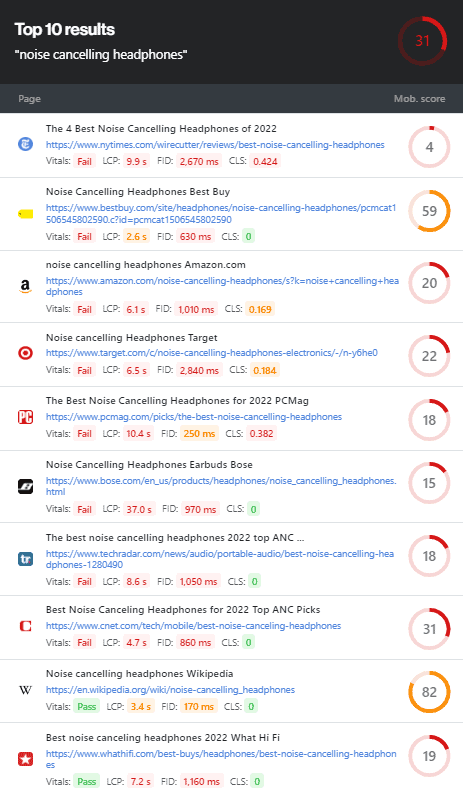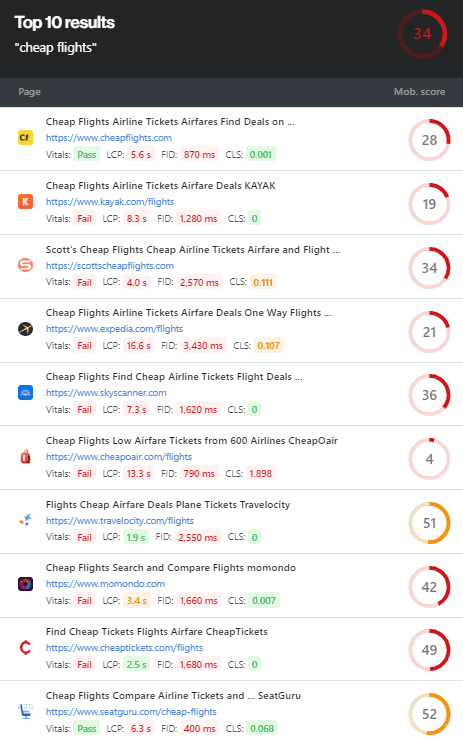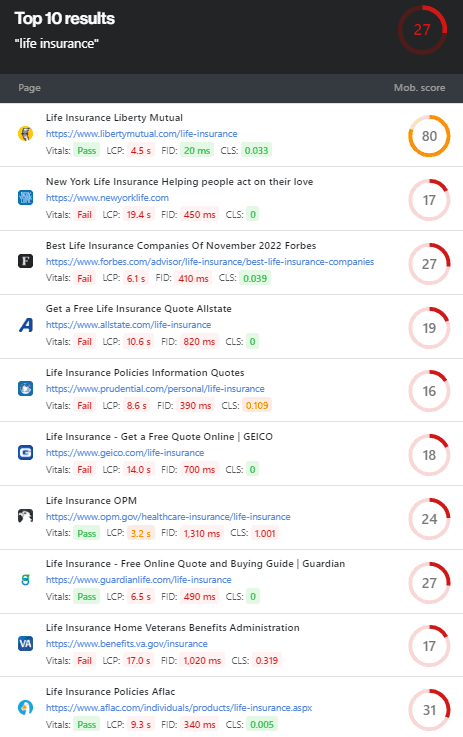It’s been over a year since Google rolled out its Page Experience Algorithm Update. Since then, SEOs have been running around like chickens with their heads cut off, worrying about their Lighthouse scores and optimal Core Web Vitals. Essentially, this new update has people sweating when trying to earn a high site ranking and maintain a good user experience. So, what have we learned from the past year that may help as we continue to optimize our online world?
A Year After Google Rolled Out Its Page Experience Update: A Retrospective.
In May 2020, Google flipped the SEO world on its head when it announced the new Page Experience Update. They utilized a phased rollout approach, eventually implementing the full mobile update with all its bells and whistles in August 2021. As a company with a reputation for providing users with the best search results possible, Google constantly strives to create a better user experience. In addition to regular ‘micro-updates’, over the years, the company has made several key changes to provide a more enjoyable, seamless search experience for those who take to its search engine with every musing, concern, and question under the sun. The Page Experience Update is an example of these savvy alterations. Google incorporated three factors into its ranking algorithm:
- Mobile Responsiveness
- HTTPS
- Core Web Vitals
Fortunately, most sites today have achieved the once unfamiliar mobile-friendliness and secure HTTPS status, so gone are the days of users screaming at their devices to “PLEASE BE A WEBSITE THAT WORKS” when clicking through from search results—or at least, those days are more limited now. However, Core Web Vitals (CWV) were a new set of metrics that also impacted the ranking algorithm. As a result, Google now encourages all site owners to monitor their Core Web Vitals and has divided the metrics into three categories: LCP, FID, and CLS. Let’s take a look at each metric.
Largest Contentful Paint (LCP)
LCP stands for Largest Contentful Paint. This score measures the time it takes for pages on your site to load. The ideal score is a speedy 2.5 seconds or less. If your loading times surpass 2.5 seconds but remain less than 4 seconds, you fall into Google’s Needs Improvement score. Finally, if your site takes longer than 4 seconds to load, Google considers your LCP score to be Poor.
First Input Delay (FID)
FID is the second metric. This acronym stands for First Input Delay. The metric looks at interactivity. Specifically, it measures the time elapsed between when a user first interacts with a page (clicking a button, for example) and when that page responds to the user by processing the event. The ideal target for this category is 100 milliseconds or less.
Cumulative Layout Shift (CLS)
The third core web vital is CLS or Cumulative Layout Shift. The goal of this metric is to identify the level of visual stability that the site provides. This measure is meant to prevent the common and irritating experience of attempting to click something and having the screen change just before you do, causing you to click the wrong button. Simply put, it measures the number of unexpected layout shifts that occur during the lifetime of a page. A good CLS score is 0.1 or less.
How Important are LCP, FID, and CLS?
In Google’s eyes, these metrics are essential because these scores are used to rank your site in search results and in terms of user experience benefits. Simply put, a good CLS score equals happy users who are more likely to engage. Users don’t enjoy having to deal with slow pages, unexpected layout shifts, and other issues. These issues can make them less likely to convert and negatively impact your sales. Furthermore, research has shown that most users never click on a single result past page one. (A result of our shorter attention spans, or need for instant gratification, perhaps?) Even moving up a few rankings can help drive significant results in terms of organic traffic. Because of these facts, SEO professionals have been scrambling to get the best scores across these metrics.
However, what impact are CWV scores really having on SEO? Could SEO professionals be putting too much emphasis on them to achieve perfect scores? Let’s get into the data.
What Does the Research Say?
It has now been over a year since the complete rollout of the Page Experience Update to Google’s algorithm debuted. That’s plenty of time to see results, if any emerge, from all the attention given to Core Web Vital scores. Ahrefs’ study in January found that the overall number of sites passing Core Web Vitals thresholds is up 10% and that high FID scores seem to be easier to achieve than LCP or CLS scores. This data shows how much attention has been given, especially in recent months, to these CWV scores. The question is, are these scores crucial to your overall search engine ranking?
According to recent research done by Advanced Web Ranking, the short answer is a resounding and underwhelming “no.” They analyzed a whopping 3 million web pages and found that most sites fail to meet the minimum requirements for CWV scores. Furthermore, the research data showed that LCP scores correlated the highest to improved site rankings, while other metrics did not have a clear impact whatsoever. Although this information may cause us to deduce that CWV scores aren’t crucial, they cautioned readers to remember that correlation is not causation. However, the conclusion we may still draw emphasizes what researchers from Perficient already found: “Our data confirms what Google has been telling us: CWV scores are not a large ranking factor”.
In September of 2021, Perficient concluded a study that looked at the top 20 results across six industries for 200 keywords each. They tracked healthcare, technology, finance, home improvement, eCommerce, and energy industries. The study ran for several months and explicitly focused on Core Web Vitals and search ranking. Their data showed little performance difference between sites that concentrate on improving their CWV scores and the overall control groups.
Despite the general importance attributed to these CWV scores, several studies have shown that high CWV scores have minimal impact on SEO – at least the key studies that I have seen. The data still does not demonstrate causation, even where a positive correlation appears to have been identified. As you’ll recall from that stats class you probably took in high school; correlation merely indicates that two factors share a positive relationship. Whether this means CWV performance impacts SEO or the relationship is merely a coincidence has not been made clear by statistical data, so those who place great value in CWV may want to focus their efforts elsewhere.
What Do Results from The Wild Say?
Let’s get personal. At Kahena, we have partnered with a wide range of businesses to achieve world-class results in their search engine marketing. For me, SEO is a passion, not a theory. Our experiences serving clients over the last year has allowed us to gain a bird’s eye view into the potential impact of these Core Web Vital scores. These insights have shaped my professional perspective on SEO practices; although I cannot provide absolute facts in support of CWV’s being an important ranking factor, I believe that I possess a somewhat well-informed point of view on this matter.
The on-the-ground results seem to confirm the statistical data. Personally, I’ve yet to see any direct ranking impacts across several different clients. Based upon these direct observations, I offer the notion that CWV performance does not significantly influence SEO. Even after focusing on and optimizing for CWV scores on both mobile and desktop, I did not see any relevant increases in keyword ranking. Even with excellent CWV scores, the SEO performance of sites did not change in any meaningful ways. In fact, some sites achieved better keyword ranking despite having poor scores. Below, we’ve shown the top ten results for three HIGHLY competitive keywords, “noise canceling headphones”, “cheap flights”, and “life insurance”.



Using Reddico’s SERP Speed Tool, we can see that most top-tier performers are failing CWV scores, yet they’re performing well for the keyword. How curious. These outcomes mean that Google users who search for this term are more likely to see these sites despite having poor CWV scores. In a domino effect, these sites experience more significant traffic—so what is the point here? Sure, correlation does not equal causation. But correlation can be telling, and, hey, there’s a heck of a lot of other evidence pointing to this conclusive point: CWV scores do not significantly impact SEO performance.
But… When Is Optimizing Core Web Vitals Worth It?
Although CWV scores may not make a massive difference in your general SEO performance, there are times when it’s worth it to focus on improving your Core Web Vitals. Luckily, several improvements to these metrics can be successfully implemented in a short time. If your SEO team has been going through a dry spell, achieving high scores across these metrics can be quick wins your team needs to keep morale up. CWV scores can sometimes be low-hanging fruit you can pursue to improve your site’s usability and potentially its ranking quickly.
It is may be worth focusing on Core Web Vitals if your site is completely failing or has issues that significantly detract from the user experience. For example, slower sites with unexpected layout shifts are not what users enjoy interacting with. Consequently, some of these issues can negatively affect your sales and conversions by driving customers away from your site.
If your site is in a position where it would be worthwhile to improve your CWV scores, good news – these websites often have the most effective optimization opportunities from a technical perspective! There are several ways to achieve this. For example, looking at some of the most common issues, you can optimize your JavaScript code to ensure rapid execution and minimal resource use. You could also implement lazy loading for your site. Lazy loading means that visible page content is prioritized in the loading process over images that the user cannot see. This means your site can operate faster, and images will load as the user scrolls past them. Fun fact: Images are often the largest pieces of content that browsers must load. By optimizing and compressing them, you can significantly reduce load times. (And users-screaming-at-their-devices’ loading times.)
Although they are not the end-all-be-all of SEO, Core Web Vitals are still important factors to consider when working to improve your site and increase your conversions. Even without better ranking performance, an improvement in the experience of using your site can drive an increase in sales.
Drawing The Line: When You Should Not Obsess
If your site is already in the moderate or high score ranges across the Core Web Vitals, it’s probably not worth it to continue working on improving them. The law of diminishing returns applies here. Continuing to get those few extra points won’t deliver the results that would make these efforts worth it. The other time you shouldn’t obsess over CWV scores is if your SEO strategy is in its early stages and there are many other things to do. There are so many other factors that can make or break your site’s SEO performance. You must complete those first and then return to your CWV scores when you have the time to do so.
Back in February of 2021, John Mueller, Search Advocate at Google, had this to say about Core Web Vitals: “So just because your website is faster with regards to Core Web Vitals than some competitors doesn’t necessarily mean that come May you will jump to position number one in the search results.” He talked about how relevance is still one of the single most significant ranking factors, and—what a shocker after everything we’ve discussed—this makes sense! Ultimately, there is very little value in having a fast site with a great experience that doesn’t actually answer questions or help users find what they’re looking for.
Relevance measures how well your site’s content matches the searcher’s intent. For example, if a searcher is looking for a new iPhone case, whether your site clearly provides information about that topic will impact its relevancy. That’s why content still reigns as king when it comes to SEO. Although technical scores and improvements can improve the UX, it is still crucial to ensure that your site has relevant content that meets the needs of Google’s users. So, back to the basics, as they say.
Admitting Personal Defeat and Looking to the Future
To wrap up, I want to note that I myself was one of the many SEO professionals who used to obsess over these scores. Yes, I would optimize websites in search of proof in favor of the importance of CWV. At the time, Core Web Vitals were one of the most critical elements of SEO to me. However, I recognize now that the time I spent focusing on these metrics could have been spent working on tasks that would actually move the needle. For example, creating good quality content and building a comprehensive internal linking strategy would have had a more positive impact on SEO performance. Experience can be a brutal teacher, but I believe it is vital to learn from your mistakes. By accepting that other tasks were more beneficial in the long run, I learned more about SEO and the metrics that really matter.
At the end of the day, there are many, many good reasons for the Page Experience algorithm update. The update encouraged many sites to put more work into creating a better user experience. Research shows that, across the board, loading times did improve. And—most importantly—there’s less frustration on the user end when things aren’t working correctly. As the update did accomplish other notable progressions, I must emphasize once again that my views on CWV are based on personal experience. The algorithm may well be more prevalent in areas which I have not yet explored, and I look forward to further research and development that is sure to come with time. Ultimately, the results of this update demonstrate yet again that Google cares about its user experience and wants to help users achieve their goals, which bodes well for future updates and changes to the algorithm.
Disagree with me? I’d love to see where Core Web Vital optimization has improved keyword rankings for you! Hit me up to discuss more.

